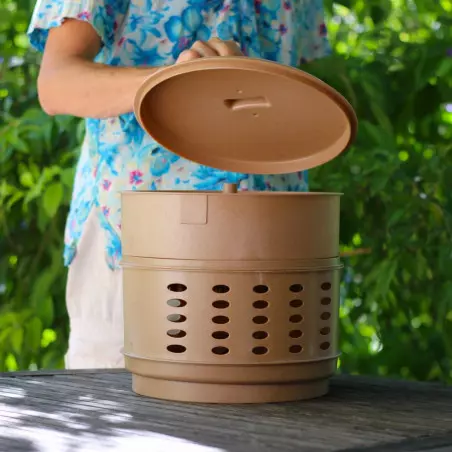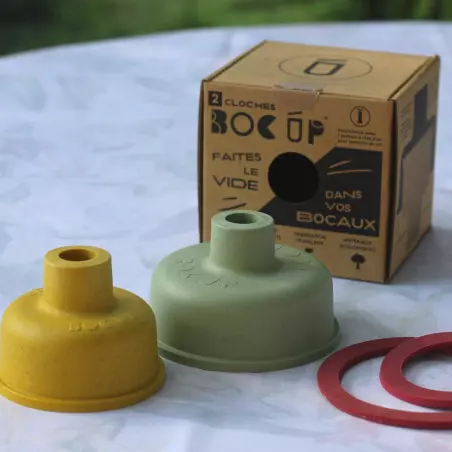What is a low-tech gift?
The term "low tech" generally refers to simple technology, sometimes forgotten or rediscovered, easy to understand and use, often without the need for electricity or electronic components. Unlike high-tech objects that rely on microprocessors and/or software, low-tech objects rely on manual mechanisms or basic physical principles to function. At Biovie, for example, our low-tech objects use air vacuum, the siphon effect studied in middle school, or gravity to operate. A low-tech gift is an object that not only does not require advanced technology to be used but also values simplicity, functionality, autonomy, and independence from human energy networks. This can range from solar dehydrators, autonomous sprouters, vacuum preservation systems to seed bombs or desert fridges. Giving a low-tech gift, whether purchased or homemade, can be a way to disconnect from the increasing complexity of our hyper-connected technological life and promote a more conscious and sustainable use of resources while fostering autonomy.
Easygreen Sol: an autonomous sprouter operating by gravity and siphon effect
The Easygreen Sol sprouter, made from bio-sourced plant materials (a mix of wood, sugarcane, and chalk), allows you to locally and automatically produce sprouted seeds at home all year round, without having to rinse or water them manually. This low-tech sprouter uses three basic physical principles: gravity, siphon effect, and atmospheric pressure.
The first principle is gravity. Instead of using an electric pump, the 5 liters of watering water are stored above the seeds to be sprouted, offering several days of watering autonomy. The second principle used is the siphon effect, which allows the very slow filling of a second reservoir and its emptying in a few seconds when it is full. Thus, 140ml of water periodically pours over the seeds in a watering similar to a light rain. The third principle is atmospheric pressure, which triggers this periodic watering. The result: the combination of these three principles allows automatic watering of the seeds every five hours for five days, without using any external energy source.
Bocup: an ingenious system for vacuum-sealing any jar.
Why buy vacuum-sealing kits with special containers when it is ultimately very easy to vacuum-seal any commercial glass jar? It is enough to reproduce in miniature the process used by industrialists. The physical principle used here is depressurization. This principle allows keeping fresh products up to 4 times longer while much better preserving texture, taste, and aromas. For example, a raw vegetable soup can be kept for 6 to 8 days under vacuum, compared to 2 days normally! It also allows enjoying more taste and crunchiness for dry foods that are protected from air, moisture, and pests. The principle used here is vacuum-sealing with a small manual pump, combined with a sort of bell that fits the shape of the jar and a yoga mat ring to use while creating the vacuum. This depressurization removes oxygen from the jars and greatly slows down the degradation processes of the food inside the jar.
Solar Dryer Kit KSS: Dehydrate Your Food in Season Using the Sun!
Nature is generous, and we can quickly find ourselves with large quantities of fruits and vegetables in peak season. These seasons are also when the sun is most abundant, so why not take advantage of it? Solar dryers/dehydrators combine two physical principles: the radiation of solar rays and the natural convection of hot air that tends to rise. Thus, the trays of your dryer are all visited by hot air from bottom to top. In addition to dehydrating fruits and/or vegetables, you can also use this type of dryer to make delicious raw crackers made with soaked seeds (buckwheat, sunflower, flax...) to make the most of their nutritional benefits, mixed with vegetables like carrots or onions and some condiments.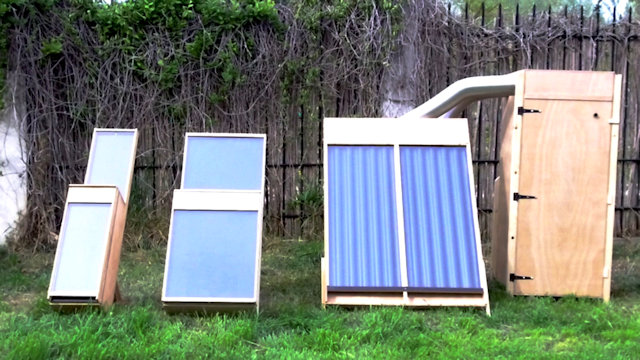
2 Low-Tech Gift Ideas to Make Yourself
We have presented three low-tech items you can buy: the easygreen sol autonomous sprouter, the bocup for your vacuum jars, and the solar dehydrator, but if you prefer to make your own gifts, here are two low-tech gift ideas you can make yourself: the seed bomb and the desert fridge.
The Seed Bomb: A Peaceful Bomb to Grow Plants Anywhere!
You can find seed bombs for purchase, but it is even simpler to make them yourself! The physical principle used here is the synergy of seeds/clay/compost.
It is a planting technique that involves throwing or placing balls of soil containing seeds in an environment where they can germinate and grow. This method is often associated with guerrilla gardening, a movement aimed at beautifying neglected urban spaces or promoting biodiversity.
Composition of a Seed Bomb:
A seed bomb is generally composed of:
- Seeds: Choose seeds suited to the environment where they will be planted. If you are short on ideas, Biovie offers 25 different types of seeds!
- Compost or potting soil: Compost or potting soil provides the necessary nutrients for the plant's initial growth phase.
- Clay: Clay helps maintain the shape of the seed bomb, retains water, and protects the seeds until they are ready to germinate.
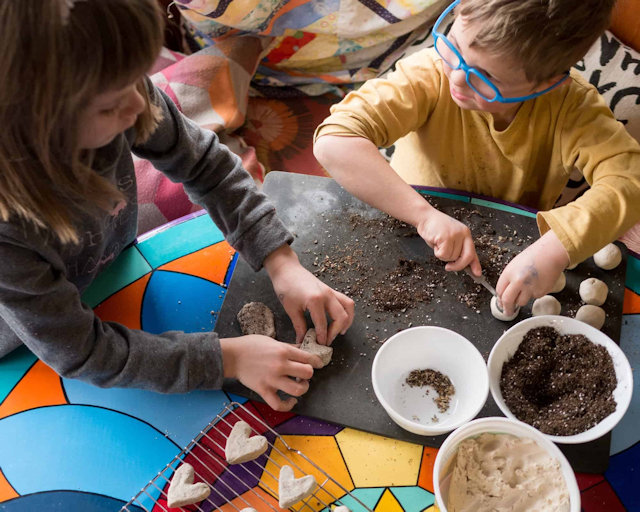
Operating Principle:
- Manufacturing: The seeds are mixed with compost or potting soil, then wrapped in clay to form a ball.
- Distribution: Once made, the seed bombs can be manually thrown into target areas. They are even sometimes dropped by drone or plane as part of large-scale reforestation projects.
- Germination: When it rains, the clay gradually dissolves, releasing the seeds into the soil enriched by the compost or potting soil. The seeds then begin the germination process.
- Growth: If all goes well, the plants grow and contribute to biodiversity or the beautification of the area.
The seed bomb is an inexpensive, fun, easy-to-make, and relatively simple planting method that can be used in various contexts, from small community gardens to large reforestation projects. Children generally love it!
The Desert Fridge or Zeer Pot
Here is a very simple low-tech gift to make. The Zeer pot, also known as the "desert fridge," is a simple yet ingenious invention for keeping food cool without using electricity. The system consists of two terracotta pots, one smaller than the other, with space for wet sand between them. The physical principle used here is heat transfer through evaporation: The water in the wet sand evaporates through the wall of the outer pot. This evaporation process absorbs heat from the inside of the pot, thus creating a cooling effect. The efficiency of the system depends on several factors, including the rate of evaporation, which is influenced by the temperature and humidity of the surrounding air.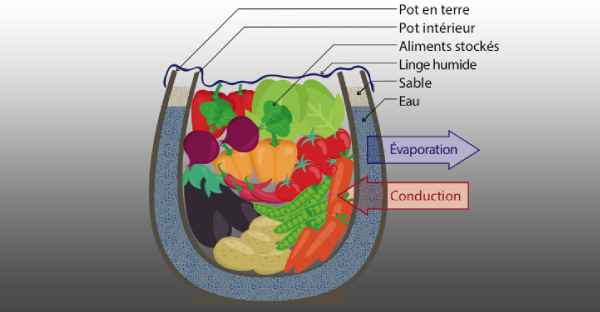
How it works:
- Two terracotta pots: Take two unglazed terracotta pots, one slightly smaller than the other. Place the smaller pot inside the larger one.
- Wet sand: Fill the space between the two pots with sand, then water the sand until it is thoroughly wet.
- Food to be preserved: Place the food you want to keep cool inside the inner pot.
- Covering: Cover the inner pot with a damp cloth or a lid to help maintain the moisture.
And there you have it, an eco-friendly mini fridge!
Final Word
You will find many resources on low tech on the internet. In France, the low tech lab offers numerous tutorials, videos, support forums, and ideas in the field of low tech.



